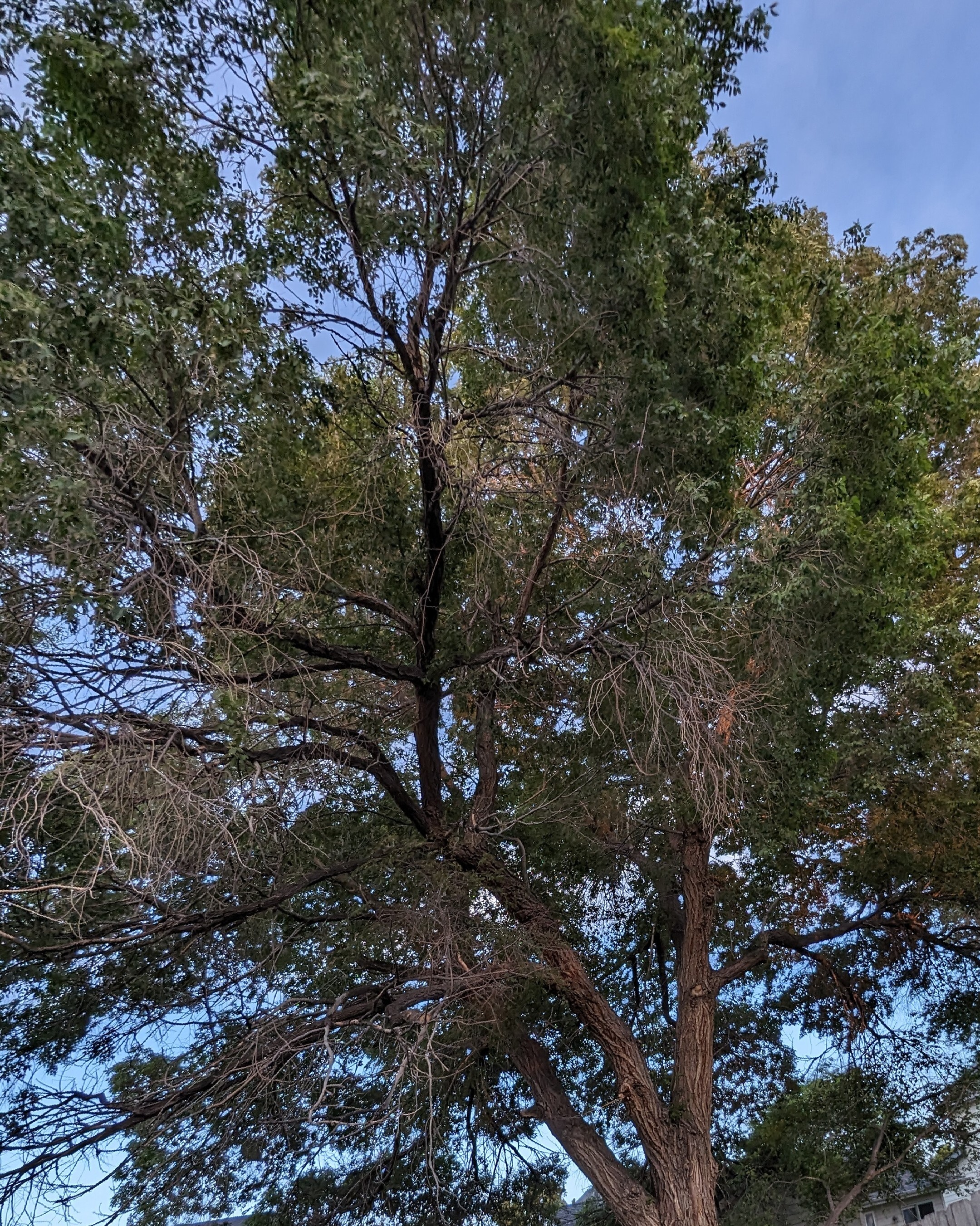The tree is an adjoining neighbors backyard with large branches that come pretty close to my house (Though there is a sizable gap, if it comes down under the wrong wind direction…) and are actually touching another neighbors roof.
If it is unhealthy, is it recoverable? I’d rather not have them cut the whole thing down (it provides a lot of shade for my backyard (well, when it’s healthy that is lmao)) Should I talk with them directly (I don’t really know them, at all) or let the city know?
Could be better… looks a bit depressed.
In don’t think anyone can tell you from a photo. You need an arborist to look at it.
You can talk to the neighbor and express your concern. Ideally, have a paper trail in case something does happen.
You can have an arborist trim any branches hanging over your property without asking the neighbor.
I would get an estimate from a couple arborists for the trimming what’s over your yard. Then, approach the neighbor and offer to pay that amount towards having the whole thing trimmed—must include trimming the parts over your yard.
I wouldn’t pay until the work is done.
If you don’t know the neighbor at all and/or can’t be sure they’re trustworthy, I’d just get the part over your yard done.
Split trunks like that form a weak spot for rot, but you’d be better to have an arborist look at it.
It can be corrected by drilling a bolt through each trunk and wiring them together so each is supporting the other instead of leaning and pulling apart.
https://www.heartwoodtreecompany.com/blog/how-to-fix-splitting-tree
It’s fine. Worst case you pay a deductible and get a new roof.
I have a coworker who took this approach and hasn’t lived in their house for over a year now waiting for the roof and structural aspects to be repaired.
Yea this is the exact scenario I’m trying to avoid, yea I have insurance, but besides the fact the deductible is over 2k I just KNOW it’s going to be an absolute PITA and at least 6 months in some shitty hotel or something
That’s the breaks. Hopefully their insurance is paying for different accomodations.
Hard to tell, but an ISA certified arborist will tell you straight. If in the states, you can look that up or contact your local state or university extension office for reputable certified arborists.
Maybe?
It will live a lot longer then all of us and many of our descendants
It’s impossible to say from this photo. Do you know what species it is? A closeup of the leaves would be helpful, and a picture of the entire tree.
Either way, best option is going to be to get a certified arborist out to look at it. It’s likely in need of a regular ol’ prune given those dead lower branches in the pic, but an arborist could tell you if there’s anything more major to consider. An arborist can assess the tree from your property and trim branches over your property, but any major work will require consent of the owner of the property the tree is on.
My recommendation would be to get an arborist assessment and then approach your neighbor with that in hand and talk through options they’re willing to consider. Cutting down a tree or even a big part of a tree this size should be a last resort, though
Thanks, yea I think im going to get an arborist
Here’s about as good of a shot of the whole tree I can get

It’s hard to tell from the pic cause I can’t get a good view of the leaves, but based on the bark, it looks like maybe it’s in the willow family. I’m thinking populus deltoides (cottonwood), but I could be way off. They often have a lot of dead branches, especially in the rocky mountains. It seems like your neighbors tree might have broken a little bit in that crotch, allowing infection to get in. It seems like there is a bit of slime flux causing that staining. If it’s close to housing, it is worth having an arborist look at it.
Like someone said below, do some due diligence to make sure you are getting a certified arborist cause otherwise, you’ll probably just find a “tree guy” who will automatically just say it needs to be trimmed or taken down. There’s a decent chance the two sides of the tree could be bolted together to reduce stress on that joint.





